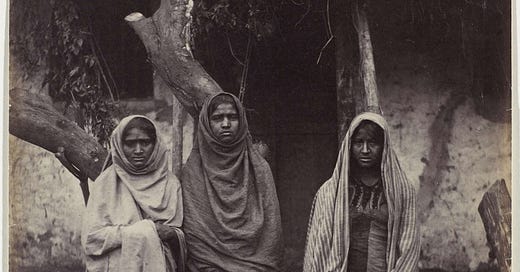Welcome to the Brown History Newsletter. If you’re enjoying this labour of love, please do consider becoming a paid subscriber. Your contribution would help pay the writers and illustrators and support this weekly publication. If you like to submit a writing piece, please send me a pitch by email at brownhistory1947@gmail.com. Check out our Shop and our Podcast. You can also follow us on Instagram and Twitter.
How the "Indian Woman" was Exploited as a Colonial Tool (And Still is) by Zara Choudhary
Over the past few years, countless South Asian women have lamented the lack of support and judgmental accusations they have increasingly faced on social media - by South Asian men.
Women, especially those visible on social media, often find themselves the focus of moral outrage and questioned for their life choices by men they have never met (take a look at the comments section on any South Asian fashion blogger’s posts and you’ll see what I mean).
In an environment that is often already hostile, such men ensure that Muslim women are left facing a battle on two fronts: Islamophobia and misogyny, the latter of which also manifests through the questioning of their religiosity. Many will have also noted the double standards that exist, whereby well-known Muslim public figures are defended for their ‘mistakes’, while women are not afforded the same generosity for lesser ‘indiscretions’.
The reasons behind this are no doubt complex and far beyond the scope of this piece to explore. But within a South Asian context at least, the disproportionate moral scrutiny endured by women should not come as a surprise; in fact, it is part of a historical trend that dates back at least two centuries. This historical framework, and the circumstances that created it, need to be better understood if we are to address the issues faced by women in any meaningful and lasting way.





